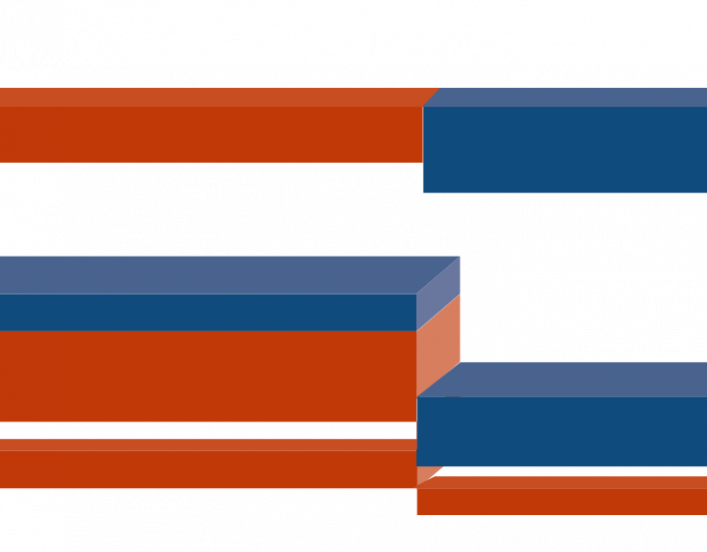The Women’s Power Gap at Elite Universities: Scaling the Ivory Tower examines diversity data at the nation’s elite research universities (“R1s”). Conducted by the Eos Foundation in partnership with AAUW, this report analyzes gender, racial and ethnic representation in top leadership roles—presidents, provosts, board chair, academic deans, presidents’ cabinets and governing boards. It shows that despite women comparable experience and desire to lead, women are often overlooked for leadership roles. Scaling the Ivory Tower outlines solutions including a call to change mandatory reporting on diversity for boards of trustees/regents, among many other recommendations.
Women’s Power Gap Initiative: Diversity Lacking in College Leadership (2021)
Scaling the Ivory Tower
The Findings
Women professionals in higher ed are large in number yet small in leadership roles. Although women make up the majority of higher ed professionals (60%), they are vastly underrepresented among the top earners.
Although women have significantly outpaced men in degree attainment, this hasn’t translated into top compensation. Women are (and have been) earning the vast majority of master’s and doctoral degrees and represent 57% of all students in our colleges and universities. Schools struggling to “find” women and people of color for leadership positions should deeply examine their institutional cultures and seek to systematically change their hiring, retention and advancement practices to more quickly and urgently close the power and pay gaps.
Women of color vastly underrepresented among high earners at elite colleges and universities. While women of color receive 16% of all doctoral, medical and law degrees, they comprise just 2.5% of the top earners. Black and Hispanic men are also underrepresented at approximately 3% each.
While women represent over 50% of medical school students, they were only 12% of top Medical Center earners. Top-paying medical positions included surgeons, clinical professors, department chairs, and administrators, among others. This is an important area for further analysis.
Lack of transparency impedes accountability. While most public universities are required by state law to make compensation data available publicly, they do not have to provide diversity data with respect to compensation, even in aggregate percentages. Private university information is even harder to come by.
Only 11 colleges and universities (8.4%) have gender parity when it comes to top earners while just two institutions have attained racial/ethnic parity. Eight schools have no women among their top earners.
Recommendations
- Ensure women and people of color are brought in at pay levels equivalent to white men. Ban the use of salary history as a component of the interview process and for pay setting.
- Conduct pay equity analyses on a regular basis, making key findings publicly available.
- At the federal level, the Department of Education should require public reporting of gender, race, and ethnicity of top earners at any university receiving federal dollars.
- 15 states and Puerto Rico ban the use of prior salary history in the hiring process. Elected leaders in the remaining states should champion similar legislation.
Related
Deeper in Debt: Women & Student Loans (2017)

The Simple Truth About the Gender Pay Gap


